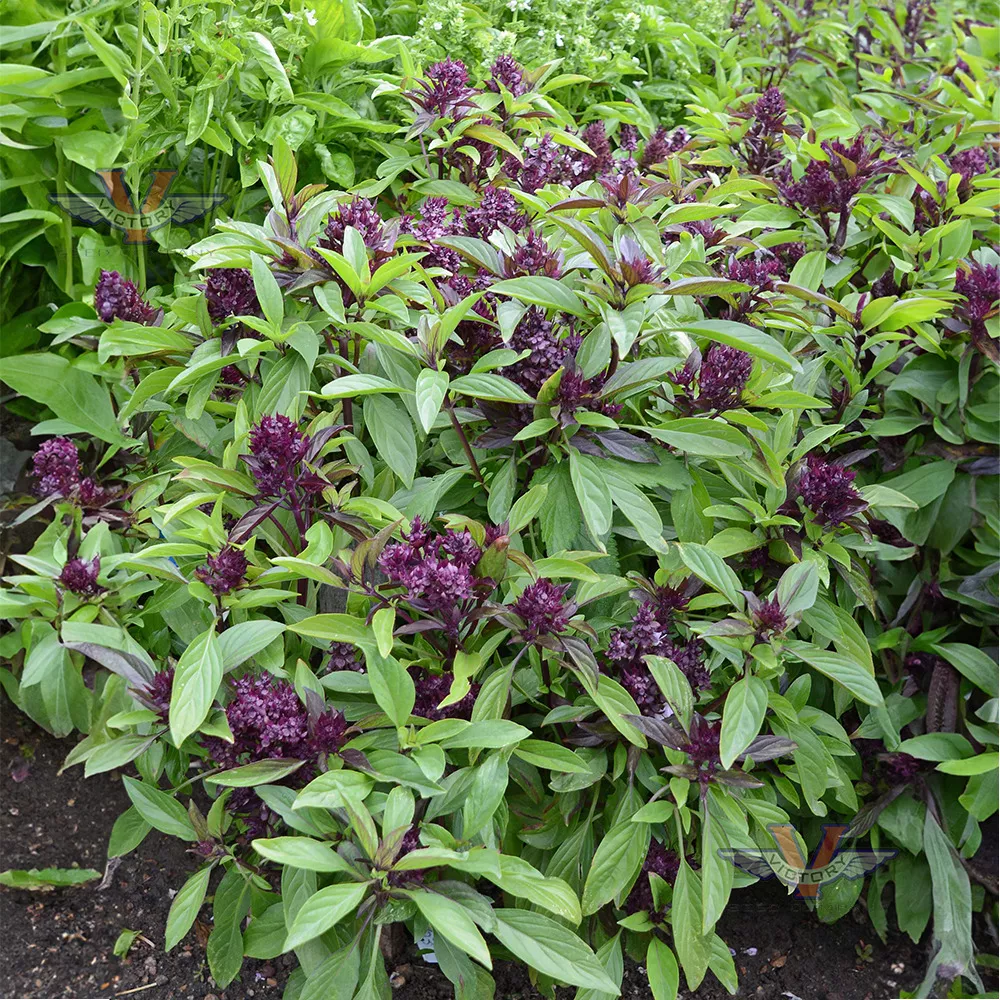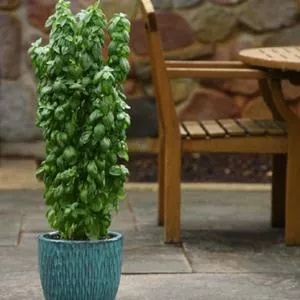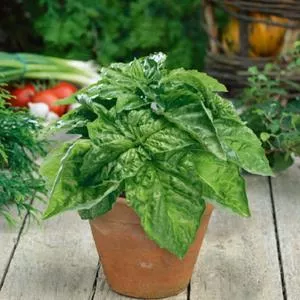Thai Basil, Siam Queen
Ocimum thyrsiflora
Price: $3.45
SKU: 40005021Choose a variant:
Thai Basil 'Siam Queen' is a lovely basil that produces dark purple flowers on sturdy plants. The leaves are extra large and have a very strong, clove-like scent. Siam Queen was a AAS winner in 1997. Basil is a tender annual that comes from the Old World tropics. It prefers sunny locations and rich soil. Appreciates afternoon shade in hot, southern climates. Can be grown in containers indoors as well as outside. Culinary uses: Mediterranean, Thai and southeastern Asian cuisine; curries, fish and beef dishes.
Harvest, Storage and Using Your Basil
First thing in the morning, when the essential oils of the plants are most concentrated, harvest mature leaves. A dual purpose practice is to regularly pinch back the growing tips of your plants. These trimmings can be used in the kitchen and the pruning of the growing tips stimulates branching which will result in sturdy, bushier plants. Whatever your harvesting practice, do not reduce your plant's foliage by more than one-third and allow it to recover before harvesting from the same plant again. After harvesting and since basil is a leafy green plant, encourage growth by feeding a good, balanced fertilizer.
The essential oils (the components that provide the flavors and fragrance) are as noted previously, quite fragile. That is, they are easily lost. Harvesting at their peak in the morning is the first step but how you store it is also critical.
For long-term storage, basil leaves can be dried and used as seasoning. In fact, many recipes call for dried basil rather than fresh, as the flavor is more subtle and complimentary. However, the best way to store basil past the fresh use stage, while preserving full-flavor, is to do what Denise does. She takes the leaves and either chops them or runs them through the food processor. As quickly as possible, they are then placed into ice cube trays and frozen. Once solid, she removes them and either stores them in freezer bags or for longer term, in vacuum sealed bags. Then throughout the year we can thaw and enjoy "fresh" basil in dishes, drop a cube into sauce or soups, or make into pesto.
During the growing season, you can take your clippings, wrap the cut ends in a damp paper towel and store in a plastic bag in the refrigerator. They will last a week or two using this method but we generally either just go out and harvest what we need, fresh, or if it is a period where we have an abundance, process for long-term storage as described.
Customer Reviews:
Do you have experience with this one? 📝 📣 Write a review!
No reviews have been posted yet.





